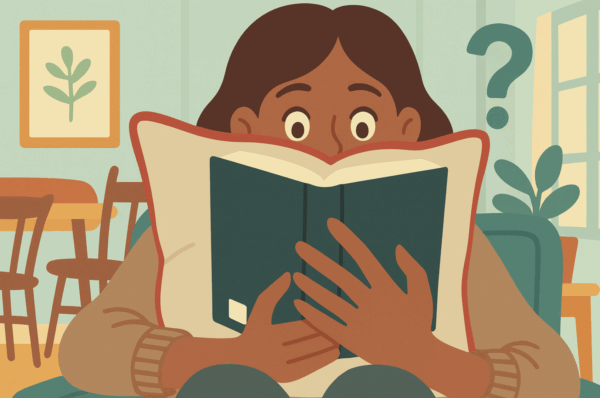Throughout history, storytelling has been an intrinsic part of human culture, serving as a means to entertain, educate, and preserve traditions. From ancient campfires to modern-day book clubs, the desire to tell stories unites us across different cultures and epochs. Yet, for many aspiring authors, the prospect of writing a book can seem like an impossible challenge, especially when faced with a blank page and no prior experience in writing. The journey from a fleeting thought to a published work is fraught with doubts, challenges, and the daunting task of translating imagination into words on a page.
Embarking on the author journey without previous knowledge or experience might seem like setting sail on uncharted waters. However, it is important to remember that every seasoned and published author once stood where you are now, at the precipice of their first word, their first sentence, their first manuscript. This journey, while intimidating, is also one of profound personal and professional growth, offering a unique opportunity to explore the depths of your creativity and voice.
This article is designed to be your compass in the vast ocean of book writing, offering guidance, encouragement, writing tips, and practical advice to navigate the initial stages of writing a book with no experience. We will start by exploring the process of developing your own writing style—a crucial aspect that distinguishes your voice and perspective in a sea of narratives. Understanding and honing your style will not only enhance your writing but also connect more deeply with your readers.
By the end of this article, you will have a clearer understanding of what it takes to start your author journey, armed with the knowledge and confidence to transform your story ideas into a manuscript. Remember, every book that has ever touched your heart started with a single word. Yours will be no different.
Quick Summary: Your Guide to Writing and Publishing a Book
Before we delve into the article, let’s look over at the main points. Writing a book can seem daunting, especially for those with no prior experience. This article serves as a comprehensive guide to help you navigate the journey from idea to published work. Key points covered include:
- Embarking on the Writing Journey: Learn how to nurture your initial ideas and develop a unique writing style.
- Understanding the Writing Process: Gain insights into drafting, revising, and seeking feedback.
- Developing Your Writing Skills: Discover practical strategies for honing your craft, from regular practice to engaging with writing communities.
- Starting to Write Your Book: Explore tips for brainstorming, planning, and establishing a productive writing routine.
- Navigating the Publishing Process: Understand the pros and cons of traditional vs. self-publishing, the importance of editing, and the steps to finalize your book.
By the end of this guide, you’ll have the knowledge and confidence to embark on your author journey and turn your story ideas into a published manuscript.
Your Publishing Journey Awaits – Start NowEmbarking on the Writing Journey
Embarking on the writing journey is akin to setting sail on a vast, creative sea. This section guides aspiring authors through the initial stages of crafting a story, from nurturing the seed of an idea to developing a unique writing style and the importance of broad literary exploration. It’s a voyage of discovery, where each word penned is a step towards realizing the dream of bringing your story to life.
Understanding the Writing Process
The writing process is a journey from the initial spark of an idea to the moment your words reach the reader. It’s a multifaceted journey that goes beyond simply putting words on paper; it involves drafting, revising, and seeking feedback, each step critical to refining your story. The first draft is often about exploration, allowing your ideas to flow freely without the constraints of perfection. This stage is where your story begins to take shape, and you discover the heart of your narrative. However, the essence of the book-writing journey often lies in revision. It’s through revising that your story sharpens, characters deepen, and plots tighten.
This stage demands a critical eye and the willingness to rework or even discard parts that don’t serve the story. Seeking feedback is another pivotal step, offering fresh perspectives on your work. Whether it’s from beta readers, writing groups, or professional editors, constructive criticism is invaluable for identifying weaknesses and areas for improvement. Understanding each phase of the writing process demystifies the journey from conception to publication, making the daunting task of writing a book more approachable and achievable.
Choosing Your Writing Style
Your writing style is the voice that sets your work apart, making it uniquely yours. It’s influenced by your choice of words, sentence structure, tone, and the rhythm of your prose. Discovering and developing your writing style is a journey of self-exploration, requiring you to write extensively and consciously reflect on your writing. Experimenting with different writing styles can be enlightening, offering insights into what resonates with you and what best serves your story.
Whether it’s the concise prose of Hemingway or the lush narratives of Tolkien, each style has its merits and audience. Embracing your natural writing voice while remaining open to growth and adaptation is crucial. Your style will evolve as you write more and expose yourself to various influences. It’s this evolution that will ultimately refine your voice, making your stories compelling and your narratives distinctive.
Reading Widely
Reading is the fuel for writing. Immersing yourself in a broad spectrum of literature not only enhances your understanding of different genres and styles but also expands your vocabulary and exposes you to new ideas and narrative structures. Each book offers a lesson in your storytelling skills, from character development and plot intricacies to pacing and dialogue. Reading widely is akin to a writer’s training, providing a foundation upon which you can build your own stories. It inspires creativity, sparks new ideas, and offers solutions to writing challenges you may face.
Whether it’s classic literature, contemporary novels, non-fiction, or even genres outside your comfort zone, each has valuable insights to offer. Furthermore, understanding the conventions and expectations of various genres can be especially beneficial if you’re writing within a specific genre. Reading is not just a passive activity; it’s an active engagement with the broader writing community, offering lessons and insights that are instrumental in shaping your journey as a writer.
Developing Your Writing Skills
Developing your writing skills is a crucial, ongoing journey that transforms budding writers into master storytellers. This section delves into practical strategies for honing your craft, from regular writing, practice writing, and community engagement to learning from seasoned authors and leveraging modern writing tools and software.
Your Publishing Journey Awaits – Start NowPracticing Writing Regularly
The adage “practice makes perfect” holds particularly true in the craft of writing. Regular writing practice is essential, serving as the bedrock for improving and refining your skills. Whether it’s maintaining a daily journal, engaging in creative writing exercises, or composing short stories and fan fiction, each form of writing contributes to honing your craft. This consistent practice helps in several ways: it keeps your creative juices flowing, reduces the intimidation of the blank page, and builds a disciplined writing habit.
Over time, you’ll notice improvements in your ability to articulate thoughts, develop characters, and weave compelling narratives. Furthermore, experimenting with various forms and genres can unlock new areas of interest and talent. The key is consistency and the willingness to see each piece of writing as a step toward mastering the art. Like a musician practicing scales or an athlete running drills, a writer’s growth lies in the dedication to daily practice.
Engaging with Writing Communities
Joining writing groups or online forums offers a wealth of benefits to both novice and experienced writers. These communities provide a supportive environment where you can share your work, receive constructive feedback, and engage in discussions about the writing process. The camaraderie found in writing groups often serves as a motivational force, encouraging you to keep writing even when faced with challenges or writer’s block.
Feedback from fellow writers can offer new perspectives on your work, highlighting strengths and areas for improvement that you might not have noticed. Additionally, writing group communities often host challenges, writing prompts, and competitions, which can be great opportunities to push your boundaries and experiment with new styles or genres. Engaging with a community of like-minded individuals fosters a sense of belonging and can significantly enrich your writing journey, providing both encouragement and constructive criticism to aid in your development as a writer.
Learning from Others
One of the most effective ways to enhance your writing skills is by learning from the experiences and expertise of others. Immersing yourself in other people’s stories—not just reading them, but studying them—can reveal crucial elements of narrative structure, character development, and effective dialogue. Seeking mentorship from more experienced writers can provide you with personalized guidance and insights into the writing and publishing process.
Moreover, attending workshops, courses, and literary classes exposes you to new techniques, writing exercises, and critical feedback from instructors and peers. These educational experiences can be invaluable, offering direct instruction on the craft of writing, from the basics of grammar and style to the complexities of plot and theme development. The act of learning from others is a humbling and enlightening part of the writing journey, reminding us that there is always room for improvement and that the pursuit of mastery in writing is a lifelong endeavor.
Using Writing Tools and Software
In the digital age, a plethora of writing tools and software is available to assist writers in every stage of their journey. From basic word processors to sophisticated writing platforms, these tools are designed to facilitate the writing process, organize ideas, and even enhance creativity. Software like Scrivener allows writers to structure their work more effectively, providing features to outline chapters, store research, and rearrange sections with ease. Grammar and style checkers, such as Grammarly or ProWritingAid, help polish prose, eliminating common errors and suggesting stylistic improvements.
Additionally, writing prompts and apps can stimulate creativity, providing fresh ideas or scenarios to explore in your writing. There are also specialized tools for character development, plot planning, and even world-building for genres like fantasy or science fiction. Leveraging these tools can not only make the writing process more efficient but also more enjoyable, allowing you to focus on the creative aspects of storytelling while the writing software itself handles the organizational and technical details.
Starting to Write Your Book
Starting to write your book marks the beginning of an exciting creative adventure. This section provides essential insights into brainstorming ideas, structuring your first draft, and establishing a productive, writing schedule and routine, laying the foundation for transforming your vision into a tangible manuscript.
Brainstorming and Planning
The genesis of every great book lies in the initial brainstorming and planning stages, where vague ideas coalesce into tangible story elements. Generating compelling story ideas often starts with ‘what if’ questions or exploring themes that resonate with you personally. It’s about letting your curiosity roam freely and considering scenarios that intrigue or challenge you. Mind mapping can be a particularly effective technique in this phase, allowing you to visually organize your thoughts and see how different story elements could connect.
Developing a coherent plot structure is the next critical step. Whether you prefer the flexibility of discovery writing or the clarity of outlining, having a rough roadmap can guide your narrative and ensure your story remains focused. Consider classic plot structures like the three-act format or the hero’s journey as templates to shape your narrative arc.
Creating relatable characters is essential for engaging your readers. Start by defining their motivations, fears, and desires—what drives them in the story, and what obstacles do they face? Fleshing out detailed character profiles can help make your characters more multidimensional and relatable. Remember, characters are the heart of your story; their journeys and growth keep readers invested from the first page to the last.
Writing the First Draft
The first draft is where you bring your story to life, translating the abstract elements of your brainstorming and planning into prose. It’s important to approach this phase with a mindset that embraces imperfections. The goal of the first draft is not to produce a polished manuscript but to lay down the raw material of your story. Allow yourself to write freely, without the inner critic overanalyzing every word or sentence. It’s okay for the first draft to be messy, disjointed, or even incomplete in places.
During this phase, focus on maintaining the momentum of writing rather than getting bogged down by details. If you encounter plot holes or inconsistencies, make a note and move on; these can be addressed in subsequent revisions. Some writers find it helpful to set word count targets or to write scenes out of order, focusing on the parts of the story that excite them most. The key is to keep the words flowing and to remember that the first draft is just the beginning of the journey toward a finished book.
Your Publishing Journey Awaits – Start NowEstablishing a Writing Routine
A consistent writing routine is crucial for progressing from a collection of ideas to a completed manuscript. Setting a regular schedule not only fosters discipline but also helps build momentum in your writing process. Determine what time of day you’re most productive—be it early mornings, late nights, or the quiet hours of the afternoon—and dedicate that time to writing. It doesn’t have to be a large block of time to write regularly either; even short, focused writing sessions can be incredibly productive.
Creating a conducive writing environment is also essential. Choose a space where you feel comfortable and free from distractions. For some, this might be a quiet home office; for others, the ambient noise of a café might be stimulating. Whatever your preference, ensure your writing space signals to your brain that it’s time to focus on your story.
Staying focused can be challenging, especially with the myriad distractions in daily life. Techniques like the Pomodoro Technique, which involves writing for set periods followed by short breaks, can enhance focus and prevent burnout. Additionally, setting specific goals, whether word counts or chapters completed, can provide a sense of achievement and keep you motivated. Remember, the key to establishing a writing routine is consistency and adaptability; find what works for you and be open to adjusting your approach as your book and your life evolve.
Navigating the Publishing Process
Navigating the publishing process is the final, pivotal step in an author’s journey. This section explores the key decisions and preparations involved in bringing your book to the public, from choosing between traditional and self-publishing paths to the critical roles of editing, design, and global distribution.
Deciding Between Traditional and Self-Publishing
When your manuscript nears completion, a crucial decision awaits: choosing between traditional publishing and self-publishing. Both paths offer distinct advantages and challenges that can significantly impact your book’s journey to the readers.
Traditional publishing involves partnering with established publishing houses that manage the editing, design, distribution, and marketing of your book. The primary advantage is the access to professional resources and networks that can elevate the quality and reach of your book. Additionally, having a publishing house behind you can lend credibility and open doors to media and bookstores. However, the traditional route is highly competitive, often requiring submissions through literary agents, and can involve long waiting periods for manuscript acceptance and book release.
Self-publishing, on the other hand, offers greater control over every aspect of the publishing process, from the book’s content and design to its pricing and distribution channels. Advances in digital platforms have made it easier than ever to publish a book, allowing authors to reach a global audience with relative ease. The downside is the responsibility for the quality and marketing of the book rests entirely on the author’s shoulders, which can be daunting and time-consuming.
Your choice between the two will depend on your priorities, whether it’s the desire for creative control, the appeal of a support network, or considerations regarding royalties and earnings.
Editing and Revising
Before your book sees the light of day, a thorough editing and revising process is essential. This stage is where you refine your manuscript, ensuring it’s coherent, engaging, and free of errors. Self-editing is the first step, requiring a critical and objective review of your own work. It helps to take a break between actual writing, and editing, allowing you to return to your manuscript with fresh eyes.
However, self-editing has its limitations. Hiring professional editors for developmental editing and copyediting can bring your book to the next level. Developmental editing focuses on the story structure itself, plot, and character development, addressing any foundational issues in your narrative. Copyediting, meanwhile, polishes the language, correcting grammar, punctuation, and style inconsistencies.
Beta readers also play a crucial role, offering valuable insights from the reader’s perspective. Their feedback can highlight areas of confusion, pacing issues, or emotional impacts, providing a real-world test before the final revisions.
The Final Steps to Publication
As your manuscript transitions from a polished draft to a published book, several key steps remain. Title selection is more than a formality; it’s a crucial marketing decision. Your title should capture the essence of your book, pique interest, and be memorable.
Cover design is equally important, as it’s often the first thing potential readers will notice. Whether you’re traditionally publishing or self-publishing, the cover should professionally represent the genre and tone of your book. Many authors opt to hire professional designers to ensure their cover stands out in a crowded market.
Self-Publishing
For those choosing the self-publishing route, navigating publishing platforms is the final hurdle. Platforms like Amazon’s Kindle Direct Publishing, Barnes & Noble Press, or IngramSpark offer various options for ebook and print publishing. Understanding the specific requirements, royalties, and distribution channels of each platform is essential for making informed decisions about where and how to publish your book.
Additionally, setting up your book’s metadata, including categories, keywords, and descriptions, is crucial for discoverability. This backend work can significantly impact your book’s visibility in online stores, making it easier for your target audience to find your work.
As you approach publication, consider your marketing and launch strategy. Building anticipation through social media, email newsletters, and pre-launch promotions can create a successful release, drawing readers to your book from day one.
Navigating the publishing process is a complex journey, but understanding these steps can demystify the path from manuscript to published book, bringing your authorial aspirations to fruition.

Publishing With Spines
Spines’ platform revolutionizes the traditional publishing journey, offering a suite of features tailored for both new and seasoned authors. With an emphasis on speed, affordability, and support, Spines ensures a seamless transition from manuscript to published book, redefining industry norms.
Key Features of Spines:
- Speed: Spines accelerates the publishing process, promising a transition from manuscript to published work in less than 30 days, challenging the protracted timelines typical of traditional publishing.
- Affordability: Leveraging AI-driven efficiencies, Spines offers comprehensive, budget-friendly plans significantly lower than industry standards, democratizing access to professional publishing services.
- Dedicated Support: Each author is paired with a personal production manager, providing bespoke guidance and expert advice at every step, mirroring the support system of traditional publishing houses.
- Format Versatility and Global Reach: Spines embraces all reader preferences by offering Print-on-Demand, eBooks, and Audiobooks, coupled with a global distribution network across 100+ channels, including top retailers like Amazon and Barnes & Noble, ensuring your story’s maximum reach.
- User-Friendly and Inclusive: The platform’s intuitive dashboard simplifies the publishing process, making it accessible regardless of technical expertise. Spines is designed to support authors at any stage of their career, from first-time writers to established authors.
Benefits of Publishing with Spines
Opting for Spines as your publishing platform offers a suite of advantages that cater to the modern author’s needs, ensuring not just a book’s creation but its successful entry into the literary world. The platform’s promise of rapid market entry is a game-changer, allowing authors to capitalize on current trends and reader interests, giving their work immediate relevance and timeliness. Financial accessibility is another cornerstone of Spines, breaking down the traditional barriers to publishing with cost-effective plans that do not compromise on quality, making the dream of publishing a book attainable for a wider range of writers.
Personalized support through dedicated production managers demystifies the often-complex publishing process, providing authors with a reliable guide at every turn. This bespoke assistance ensures that every decision, from cover design to marketing strategy, is informed and aligned with the author’s vision. The extensive format selection and global distribution network that Spines offers mean that no reader is out of reach, whether they prefer the tactile feel of print books, the convenience of e-books, or the immersive experience of audiobooks.
Finally, the platform’s intuitive, user-friendly interface ensures that authors can navigate the publishing process with ease, allowing them to focus their energies on what they do best—crafting compelling narratives. In sum, Spines stands out as a holistic publishing solution that empowers authors to bring their stories to a global audience with confidence and creativity.
Your Publishing Journey Awaits – Start NowFinal Thoughts: The Journey from Pen to Published
The voyage from the conception of an idea to the publication of your first novel or book is a profound narrative in itself, woven with threads of aspiration, dedication, and transformation. It is a journey that transcends the mere act of writing, evolving into an exploration of self and the boundless realms of imagination. Each step, from the nascent stages of brainstorming to the meticulous crafting of your narrative, is a testament to the courage and resilience inherent in every writer. This path is not without its hurdles; indeed, it is the overcoming of these challenges that shapes not just a compelling story, but a compelling storyteller.
Embarking on this literary adventure requires more than just a pen and paper; it demands a steadfast commitment to growth and learning. The development of one’s writing skills is an ongoing odyssey, punctuated by moments of clarity and periods of doubt. Yet, it is within this dynamic process that the true artistry of writing is discovered and honed. Engaging with communities of fellow writers, seeking feedback, absorbing the wisdom of mentors, and embracing the potential of modern writing tools and software are integral to this developmental journey, enriching your narrative voice and expanding your storytelling capabilities.
The culmination of this journey marks a pivotal moment of transition from concept to creation. It is here that the disciplines of routine, structure, and focus are most crucial, guiding the chaotic beauty of creativity toward a coherent, captivating manuscript. This phase is the crucible within which raw ideas are forged into the stories that resonate and endure.
As you approach the horizon of publication, navigating its complexities with platforms like Spines can illuminate the path forward for a better writer, offering a fusion of speed, accessibility, and comprehensive support. This final leg of the journey underscores the transition from solitary writing to shared storytelling, bridging the intimate space of creation with the vast expanse of the reading world.
In summary, the journey from pen to published is a mosaic of moments—challenging, rewarding, and transformative. It is a narrative of personal evolution, a testament to the enduring power of stories, and an invitation to embark on an adventure that transcends the boundaries of imagination. As you tread this path, remember that each word written is a step towards leaving an indelible mark on the tapestry of human culture.







